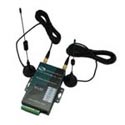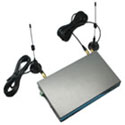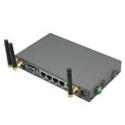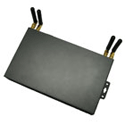There are many types of 4G industrial routers, which can be divided into different categories from different perspectives. Different types of 4G industrial routers can be used in different environments. The following sections classify the 4G industrial routers from different perspectives.
According to the performance
From the perspective of performance, 4G industrial routers can be divided into linear router and non-linear router.
The so-called wire speed router can transmit freely according to the transmission medium bandwidth, basically without discontinuity and delay. The specific calculation method is the same as that of the switch line speed backplane bandwidth. A wire-speed router is a high-end router with very high port bandwidth and data forwarding capability that forwards packets at the media rate.
Non-wire-speed routers are mid – to low-end routers, but some new wire-access routers also have wire-speed capabilities. The performance of router is mainly affected by CPU performance. If the CPU performance is high, the 4G industrial router is more likely to be a high-performing wire-speed router.
Speed is generally not a measure of a router, and data throughput is one of the references used to measure a router’s maximum data throughput. The routers with the capacity of the rear plates of 4G industrial routers greater than 40Gbps are called high-grade routers. The routers with the capacity of the rear plates between 25Gbps and 40Gbps are called midrange routers, while those with the capacity lower than 25Gbps are considered as low-grade routers. This kind of dividing way is not so absolute, specific parameter needs to make distinguishing according to each manufacturer specific parameter.
According to the structure of the points
The 4G industrial router can be divided into modular router and non-modular router according to the structure Angle.
Modular routing generally only provides basic routing function when leaving the factory. Its interface type and partial extension function are configured according to the actual needs of users. Users can choose corresponding modules according to the network type they need to connect. Different modules can also provide different connectivity and management capabilities. For example, the vast majority of modular routers allow users to choose network interfaces, VPNS, firewalls and other functions, most of which are modular routers.
Routers H685/H700/H720/H750/H820/H820Q/H820QO from E-Lins are all modular router, can meet the requirements from all over the world.
Non-modular routers are mostly low-end routers, which are mostly used in civilian environments. Primarily used to connect small business customers within homes or isps, supporting virtual private network protocols such as SLIP, PPP, PPTP, and IPSec. These protocols to run on each port, such as ADSL will increase home broadband availability, which will increase the burden of accessing routers. In the future, such router ports will run multiple protocols while avoiding the telephone switched network.
According to the function points
The 4G industrial router is divided into general router and special router. The common civilian router is the general router, that is, the router that can normally use the routing function under the general environment, and there is no other special requirement scenario.
The special router optimizes the routing interface, hardware and so on to realize a certain function. For example, the foreign trade special router changes the local IP through the special router, which can also quickly access some foreign trade stations in China, which is more convenient.
According to the interface points
4G industrial routers can support SDH stm-1 interface, SDH stm-4 interface and SDH stm-16 interface. At present, the router supporting SDH stm-64 interface is high-end 4G industrial router. However, other interfaces are relatively weak, among which stm-1 has two types of optical interface and electrical interface. Stm-1 electrical interface is suitable for local situations where the interference signal is weak. The light interface is usually used for stm-4, stm-16 and stm-64.
according to the perspective of the object of use
The 4G industrial routers can be divided into core router (core level), distribution router (enterprise level) and access router (home level) according to the perspective of the object of use.
The core router, which is the router that forwards packets to the host computer in the network (but not between networks), is the key device to realize Interner network interconnection with other levels of routers. Often used by telecom operators or isps. The throughput of core router is larger, and the requirement of speed and reliability is higher. In order to obtain high reliability, the network system generally adopts traditional redundant technology such as hot backup, dual power supply and dual data path, so that the reliability of backbone router is not a problem.
Distributed routers are used to connect multiple logically separate networks because there are many connected objects, the system is relatively simple, and the data traffic is relatively small. In addition to connecting different networks, distribution routers also need to choose smooth and rapid short-cuts to improve the communication speed, reduce the network communication load, save system resources while improving the unimpeded rate, and maximize the benefit of the network system.
The access router is mainly used for network interconnection in the small local area network. It is often used in the case of small area and simple network environment such as home, small enterprise or net bar.







